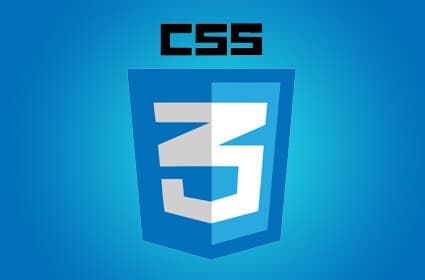Ever felt lost in a sea of technical jargon when discussing website development with your tech team? You’re not alone! Many resources out there cater to developers, leaving business owners and marketers scratching their heads. But fear not! Here’s a breakdown of the core web development technologies, explained in a way that makes sense for everyone.
Lifting the Tech Veil: Why Understanding Web Development Matters
Even if you’re not writing code yourself, having a basic grasp of web development is key. This knowledge empowers you to:
- Speak the Same Language: Communicate effectively with your developers, avoiding misunderstandings and ensuring your project stays on track.
- Make Informed Decisions: Ask insightful questions and participate in discussions about the technical feasibility of your ideas.
- Appreciate the “How”: Gain a deeper understanding of the intricate workings behind your website, fostering a sense of ownership and appreciation.
Let’s delve into the fascinating world of web development technologies!
The Two Sides of the Web Development Coin: Front-End vs. Back-End
Imagine your website as a well-oiled machine. Web development technologies are the building blocks that make it function. These technologies fall into two main categories:
- Front-End (Client-Side): This is the user’s playground – everything you see and interact with on a website. Think text, images, buttons, menus – the visual interface that comes to life on your screen.
- Back-End (Server-Side): Working tirelessly behind the scenes, the back-end is the brain of the operation. It handles data storage, user logins (like remembering your profile on a social media site), and ensures everything runs smoothly. It also crunches data to generate reports or send automated emails.
In this article, we’ll focus on the front-end – the user-facing magic that makes your website visually appealing and interactive. Stay tuned for the next part, where we’ll explore the back-end – the powerful engine that keeps everything running!
1. HTML
The Building Blocks of Your Website: Unveiling HTML5’s Superpowers
HTML – it might sound fancy, but it’s the bread and butter of web development. Think of it as the invisible skeleton that holds your website together. HTML (HyperText Markup Language) defines the structure and layout of a web page, telling the browser where to place text, images, and other content. Without HTML, your website would be a jumbled mess!
But HTML5, the latest and greatest version, takes things a step further. It’s like giving your website superpowers! Here’s a sneak peek at some of HTML5’s coolest features:
- Canvas: Paint Your Web Dreams: Imagine creating graphics and animations directly on your website, like those fancy video game visuals. With Canvas, you can! This HTML5 element lets you draw and manipulate images and shapes, making your website more interactive and engaging.
- Web Storage: Remember Me?: Tired of logging in every time you visit a website? Web Storage lets websites store information right on your browser, like your login details or preferences. So next time you visit, the site remembers you, just like a friendly neighbor!
- Service Workers: Your Website, Always On Duty: Ever wish your website worked even when you’re offline? Service workers make that dream a reality! These scripts run in the background, even when you close your browser, allowing features like offline access and web push notifications. Now you can stay connected without constant internet access.
- WebSockets: Real-Time Chat & More: Imagine having a constant conversation with your website! WebSockets enable real-time, two-way communication between users and servers. This tech powers features like live chat applications and instant notifications, keeping you connected and in the loop.
These are just a few of the exciting features that HTML5 brings to the table. By unlocking the power of HTML5, you can create dynamic, interactive websites that engage your users and leave a lasting impression. Stay tuned as we explore more web development technologies that bring your website to life!
2. CSS
Imagine your website as a house. HTML is the skeleton, providing the essential structure. But a house without style is just a boring frame. That’s where CSS comes in! CSS (Cascading Style Sheets) acts like the interior designer, dictating the visual look and feel of your website.

Here’s how CSS transforms a basic webpage:
- From Bland to Beautiful: CSS lets you control the visual presentation of your website, including colors, fonts, and layouts. You can create a sleek and modern aesthetic or a fun and playful theme, all tailored to your brand identity.
- Layout Magic: Want your navigation bar on the left or the top? CSS controls the positioning of elements on the page, ensuring everything is neatly organized and easy for visitors to find.
- Typographical Tweaks: CSS lets you define the fonts used on your website, allowing you to choose styles that are easy to read and visually appealing. No more boring Times New Roman!
With CSS, you can take a basic HTML structure and turn it into a visually stunning website that engages visitors and leaves a lasting impression. In essence, CSS is the magic that transforms a house into a home for your online presence. Stay tuned for our next chapter where we delve deeper into the exciting world of web development!
3. Programming languages
Imagine a world where you can talk directly to your computer, instructing it to perform specific tasks. That’s the power of programming languages! These languages act as a bridge between us and the digital world, allowing us to tell computers exactly what we want them to do. Just like there are many human languages, there are many programming languages, each with its own strengths and purposes. Developers typically specialize in a few of them to become masters of their craft.
Here’s a glimpse into some of the most popular programming languages and what makes them tick:
- JavaScript: The All-Around Talent: JavaScript is a favorite among startups because it’s like a Swiss Army knife – it can do a lot of things! It works on both the front-end (the user-facing side of a website) and the back-end (the behind-the-scenes engine). It’s also relatively easy to learn compared to other languages, making it a great starting point for aspiring programmers. Plus, JavaScript is constantly evolving, ensuring it stays relevant in the ever-changing world of technology.
Back-End Powerhouses:
- PHP: The King of Content Management: If you’ve ever used WordPress, you’ve encountered PHP in action! This language is the backbone of many popular content management systems, making it a dominant force in web development. Choosing a widely-used language like PHP has a big advantage – there’s a vast pool of developers who know it, and tons of online resources for troubleshooting and support if you get stuck.
- Python: The Simplest Way to Talk Tech: Python is a favorite for its clear and concise syntax, making it easy to read and understand – even for those new to coding. This readability makes it ideal for complex projects in artificial intelligence, data science, and machine learning. But don’t be fooled by its simplicity, Python can also be a powerful tool for web development.
- Java: The Enterprise Rock Star: Big companies love Java because it can handle anything you throw at it. Thanks to its ability to work on different computer systems (cross-platform compatibility) and its extensive documentation, Java is a reliable choice for large-scale enterprise applications. Plus, it’s the go-to language for building Android apps!
- Rust: The Safety-First Contender: Rust is a rising star in the programming world, prioritizing safety and security. This is especially important when dealing with complex software that needs to run multiple tasks simultaneously (concurrently). While Rust is newer than some other languages, it’s gaining traction for its high performance and emphasis on safe coding practices.
This is just a taste of the vast and exciting world of programming languages. Each language has its own unique strengths and applications. In the next part of our journey, we’ll delve deeper into the world of web development and explore the specific ways these languages are used to bring websites to life!
4. Web development frameworks
Imagine building a house. You could gather all the raw materials – wood, bricks, nails – and start from scratch. Or, you could use pre-built walls, pre-wired circuits, and pre-assembled plumbing systems. That’s the difference between coding from scratch and using web development frameworks.
Frameworks: The Developer’s Toolkit
Web development frameworks are like toolkits for programmers. They come packed with pre-written code snippets (libraries) that handle common tasks, saving developers time and effort. Think of them as pre-built components that developers can snap together to create complex features without reinventing the wheel.
Here’s how frameworks supercharge the development process:
- Faster Development: By using pre-written code, developers don’t have to write everything from scratch. This frees them up to focus on the unique aspects of your project, leading to faster development cycles and quicker time to market.
- Reduced Costs: Less time coding translates to lower development costs. Frameworks can help you get the most out of your development budget.
- Reduced Risk: Frameworks come with tried-and-tested solutions, reducing the risk of bugs and errors that can creep in when writing custom code from scratch.
Frameworks for Every Facet of Development
There are frameworks for both the front-end (the user-facing side of a website) and the back-end (the behind-the-scenes engine). Here’s a glimpse at two popular options:
- Angular: The Feature-Packed Front-End Powerhouse: Developed by Google, Angular is a comprehensive framework that comes loaded with features. Think of it as a Swiss Army knife for front-end development. While its extensive toolkit makes it ideal for large companies and complex projects, Angular can have a steeper learning curve for beginners. It’s also important to note that Angular has multiple versions, which can present challenges when updating your website as functionalities might differ between versions.
- Node.js: JavaScript Takes the Back-End by Storm: Node.js allows developers to write back-end code using JavaScript, a popular and widely-used language. This is a big advantage – developers can use the same language for both front-end and back-end development, saving time and streamlining the process. Node.js is known for its speed and efficiency, making it a great choice for real-time web applications. However, it might not be the best fit for tasks that require a lot of processing power.
In the next chapter, we’ll explore even more exciting aspects of web development and the technologies that bring websites to life!
5. Libraries
Libraries encompass files, programs, routines, scripts, or functions that can be seamlessly integrated into code during development. They streamline the coding process by providing pre-written functionality, thus eliminating the need to write code from scratch. Similar to frameworks, libraries mitigate coding errors, enhance efficiency, and result in cost savings.
However, libraries differ from frameworks in their approach. While a framework defines and structures the development process, libraries are flexible resources that developers can integrate into their own project structures and designs. Libraries are often utilized for specific functions or features, whereas frameworks offer a more comprehensive development environment.

Here are some examples of different libraries:
React.js:
Backed by Facebook, React.js is a leading front-end library renowned for its ability to create visually appealing user interfaces (UI). Although it entails a somewhat steep learning curve, React.js continually evolves with updates aimed at enhancing performance and maintenance.
Vue.js:
Vue.js is another front-end library focused on UI creation. Compared to React.js, Vue.js is simpler and more user-friendly. Despite having a smaller community for support, Vue.js offers speed and a relatively easy learning curve. Its ease of use contributes to its growing popularity among developers.
FacebookSDK:
FacebookSDK is a specialized library designed to integrate applications with Facebook’s platform. By leveraging this library, developers can access user data exchanged between their app and Facebook. This data enables optimization of applications, advertising strategies, and provides valuable metrics such as user downloads.
6. Databases
Databases serve as repositories for all your data, offering more than mere digital storage units. They provide structured frameworks for efficient storage and retrieval of vast amounts of data.
There are two primary types of databases: SQL and NoSQL.
SQL databases utilize structured query language (SQL) to define and manipulate data. SQL serves as the communication medium between coders and databases, facilitating data manipulation. Due to the standardized use of SQL, predefined schemas dictate the data structure, requiring upfront preparation to ensure data consistency.
On the other hand, NoSQL databases, as the name suggests, do not adhere to structured query language conventions. This flexibility allows for diverse data storage methods without the need for predefined structures. Each piece of data can possess its own unique structure within a NoSQL database, independent of the database’s overarching structure.
Examples of popular databases include:
- MySQL: An open-source SQL database widely utilized in WordPress websites.
- MongoDB: An open-source NoSQL database offering flexibility in data storage.
- Oracle: A proprietary database management system catering to online transaction processing, data warehousing, and mixed database workloads.
Conclusion
Having a grasp of the technologies utilized in web development empowers business owners and marketers to actively participate in the development process. While they may not need to commit everything discussed above to memory, having this article on hand offers valuable technical insights to inform decision-making throughout a project.
However, the crux of selecting the appropriate web development technologies lies in choosing the right partner to execute your project. Our recommendation? Seek out a partner who not only assists you through the process but also communicates clearly, answering your queries in understandable terms. Ultimately, while code powers websites, what you truly seek is a vendor capable of demystifying the complexities of web technologies.

Comments are closed